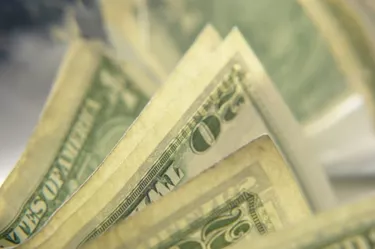
Yield to maturity relates to the yield on all fixed-rate securities if an investor holds the instrument until it matures. On the other hand, the spot rate is the theoretical yield of a zero coupon fixed-rate instrument, such as a Treasury Bill. Spot rates are used to determine the shape of the yield curve and for forecasting forward rates, or the expectation of future interest rates.
Yield to Maturity
Video of the Day
The yield to maturity is calculated to determine the return a fixed-rate instrument such as a bond provides to a bond investor. It is a truer measure of return compared to the actual coupon, or interest rate that is being paid to the investor. For example, the yield to maturity of a bond selling at a discount will be higher than the actual coupon rate of the bond. Conversely, the yield to maturity of a bond selling at premium is lower than the coupon rate.
Video of the Day
Calculating Yield To Maturity
In order to calculate the yield to maturity for a bond, you need the market price, coupon or interest rate and term to maturity. For example, a bond selling at 97.63 is selling at a discount (bond prices are expressed in terms of 100 representing a face value of $1,000) and pays an annual coupon rate of 7 percent. Interest payments are made twice a year and, as of January 1, the bond has five years left to maturity. Using a financial calculator, the inputs are as follows: present value (PV) = -976.30 (97.63 x 10); payment (PMT) = $35 ($70 annual interest divided by 2); number interest payments left to maturity (n) = 10 (2 interest payments x 5 years); future value (FV) = $1,000 (price of bond when it matures). The yield to maturity is 3.79 percent x 2 = 7.58 percent.
Spot Rate Treasury Curve
Spot rates are usually associated with Treasury securities because they are widely popular with investors as a safe asset class and are highly liquid. Investors use calculated spot rates of Treasury securities to develop what is referred to as the Spot Rate Treasury Curve. The shape of the Treasury Curve provides investors with information regarding future expectations for interest rates. In general, the Treasury Rate Curve is an approximation of the shape of the yield yield curve for all fixed-rate securities. The yield curve shows the relationship of interest rates of bonds with varying terms to maturity.
Using Spot Rates To Calculate Forward Rate
To figure out the implied spot rate of a zero coupon bond, first note the number of coupon payments and term to maturity of a traditional bond. For example, a six-month bond has to two cash flows: one coupon payment and redemption value. In essence the six-month bond is trading as a zero coupon bond. Since the bond's present value, future value, and term to maturity are known, use the compound interest equation to solve for the interest rate. Once you obtain the implied spot rate for the zero coupon bond, you can use this to calculate implied spot rate for a one year zero coupon bond and so forth. Calculating implied spot rates in successive steps to determine forward interest rates uses an iterative process called bootstrapping.